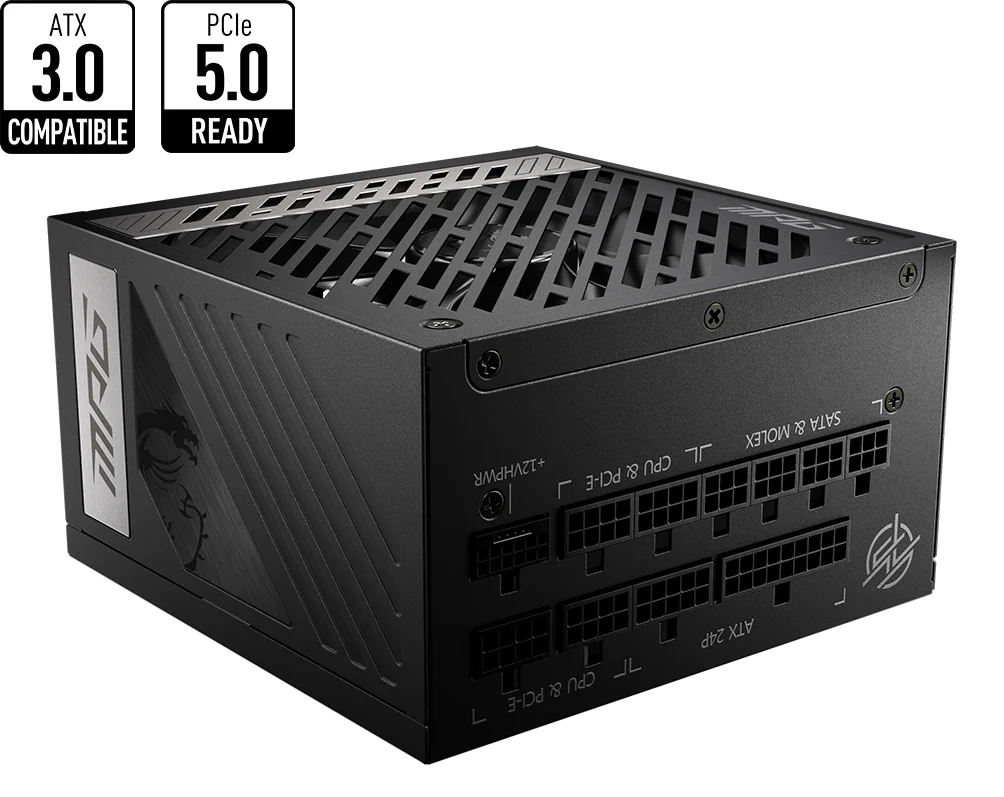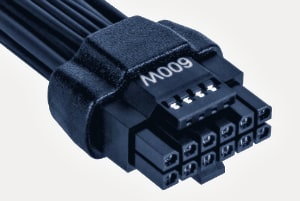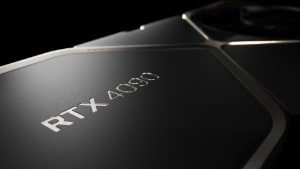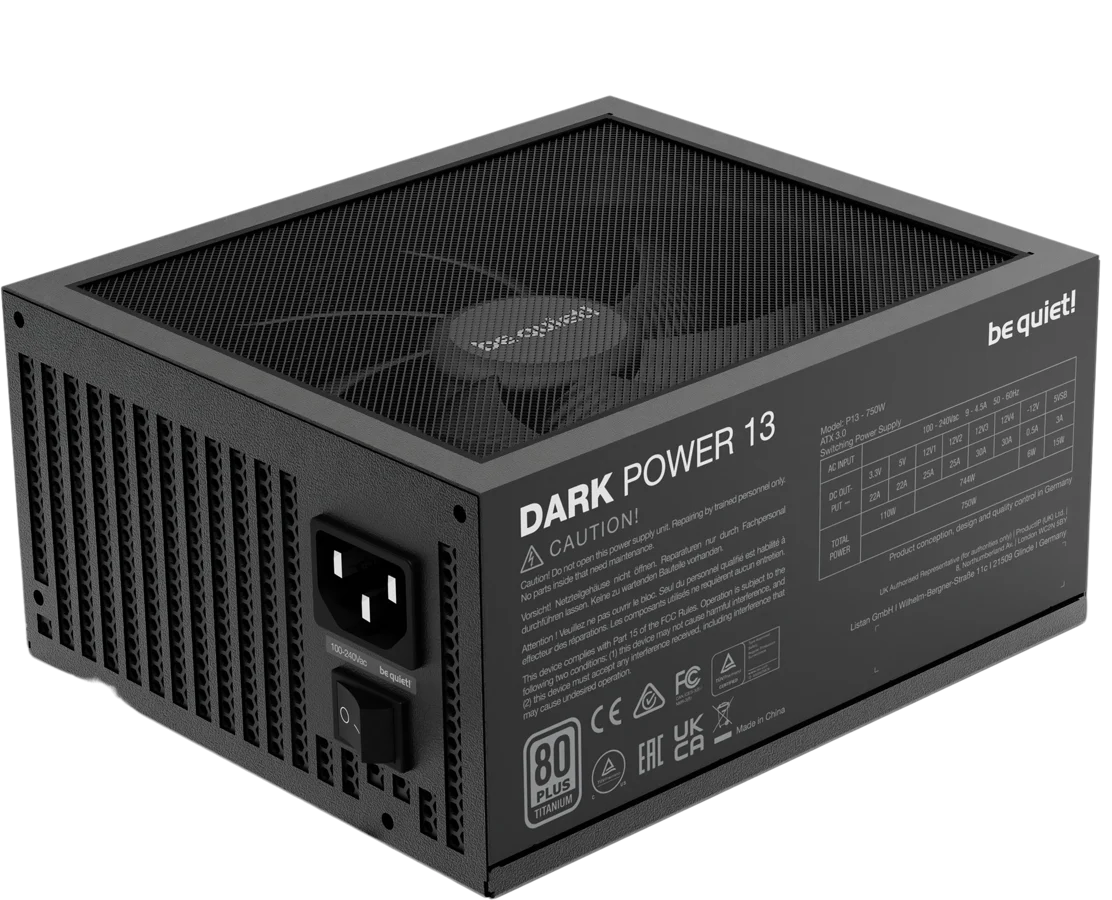
Recently, the world of power supply units (PSUs) changed for the first time in ages with the introduction of PCIe 5.0 and ATX 3.0 technologies.
But what does it mean and do you really need to upgrade? For most people, the answer is probably no, for now at least. This article will take a closer look at what PC gamers need to know about the latest PSU options.
Emergence of PCIe 5.0/ATX 3.0 PSUs
 A power supply unit (PSU) is a basic part of any PC. It converts the alternating current (AC) from your wall outlet into direct current (DC) to power your computer’s internal components. With the latest high-end graphics cards and CPUs, the demand for power supply units that can handle these power-hungry components has increased exponentially.
A power supply unit (PSU) is a basic part of any PC. It converts the alternating current (AC) from your wall outlet into direct current (DC) to power your computer’s internal components. With the latest high-end graphics cards and CPUs, the demand for power supply units that can handle these power-hungry components has increased exponentially.
This is where PCIe 5.0 and ATX 3.0 PSUs come into play.
PCIe 5.0/ATX 3.0 PSUs are the latest generation of power supply units designed to cater to the power requirements of advanced hardware components. They are equipped to manage power surges or “power excursions” effectively, thereby ensuring system stability under demanding conditions.
Additionally, they come with a new 16-pin (12VHPWR) “PCIe 5.0 connector”, simplifying cabling and reducing clutter. The 16-pin connector can deliver up to 600 watts of power to the graphics card, eliminating the need for multiple connectors or adapters. This simplifies the installation process and minimizes cable clutter. However, the standard is only used by Nvidia in its RTX 4000-series cards and later.
The term “PCIe 5.0” in the context of a PSU refers to its compliance with said power excursions via specifications defined by the PCI SIG in the PCIe 5.0 specification.
This means that a PCIe 5.0 PSU is designed to handle the power excursions that occur over the PCIe 5.0 12VHPWR cable, ensuring optimal power delivery and stability for your high-end GPUs.
Power demands of current GPUs

Advanced GPUs like NVIDIA’s GeForce RTX 40 series require higher power to deliver their groundbreaking performance. For instance, the RTX 4090 consumes nearly 100 watts more than its predecessor.
This high power demand can lead to power spikes or excursions, potentially causing system shutdowns, data loss, or hardware damage. PCIe 5.0/ATX 3.0 PSUs are designed to manage these power spikes effectively, thereby ensuring uninterrupted gaming or content-creation sessions.
Older and less demanding GPUs will rarely if ever benefit from an expensive PCIe 5.0 certified power supply, which is why most users do not need one at this time.
What about ATX 3.0?
The PCIe 5.0 label on power supplies is usually paired with an ATX 3.0 one as well. This is the latest version of the ATX standard that defines form factors for desktop computer motherboards and PSUs.
Released in 2022, ATX 3.0 PSUs offer double the total power excursion capability and triple the GPU power excursion, supporting up to 200% power excursion and reaching 70% low load efficiency. This ensures system stability even during the most demanding conditions.
ATX12VO 2.0: Improved efficiency and performance
While ATX 3.0 emphasizes handling power excursions, the ATX12VO 2.0 specification focuses on reducing power consumption during system idling by moving the 3.3V and 5V power rails to the motherboard. This not only improves power efficiency but also allows for real-time communication between the PSU and the motherboard, enabling the system to manage power consumption based on the PSU’s capacity.
Examples of PCIe 5 & ATX 3.0 PSUs

- MSI MEG/MPG A1000G & 1000P
- FSP Group FSP Hydro G / PTM X
- Be Quiet! Dark Power 13, Pure Power 12 M
- ThermalTake Toughpower GF3, PF3, Toughpower SFX
- Silverstone Hela 1200P, 1000G, 850P
- Seasonic Vertex series (e.g. PX-1200, PX-1000, PX-850)
- ASUS Loki (750P, 850P, 1000P), ROG Strix Gold Aura
- NZXT C series (1200G)
- Lian Li SP series
- Corsair Shift series
- CoolerMaster V SFX Platinum series
Summary
The introduction of PCIe 5.0/ATX 3.0 PSUs is clearly a milestone in the evolution of power supply units. By effectively managing power excursions and simplifying cabling, these PSUs are set to deliver optimal performance for your high-end GPUs and CPUs.
However, all users except those with the latest high-end parts can easily get by without a PCIe 5.0/ATX 3.0 PSU for now. But it is a step towards future-proofing your system.